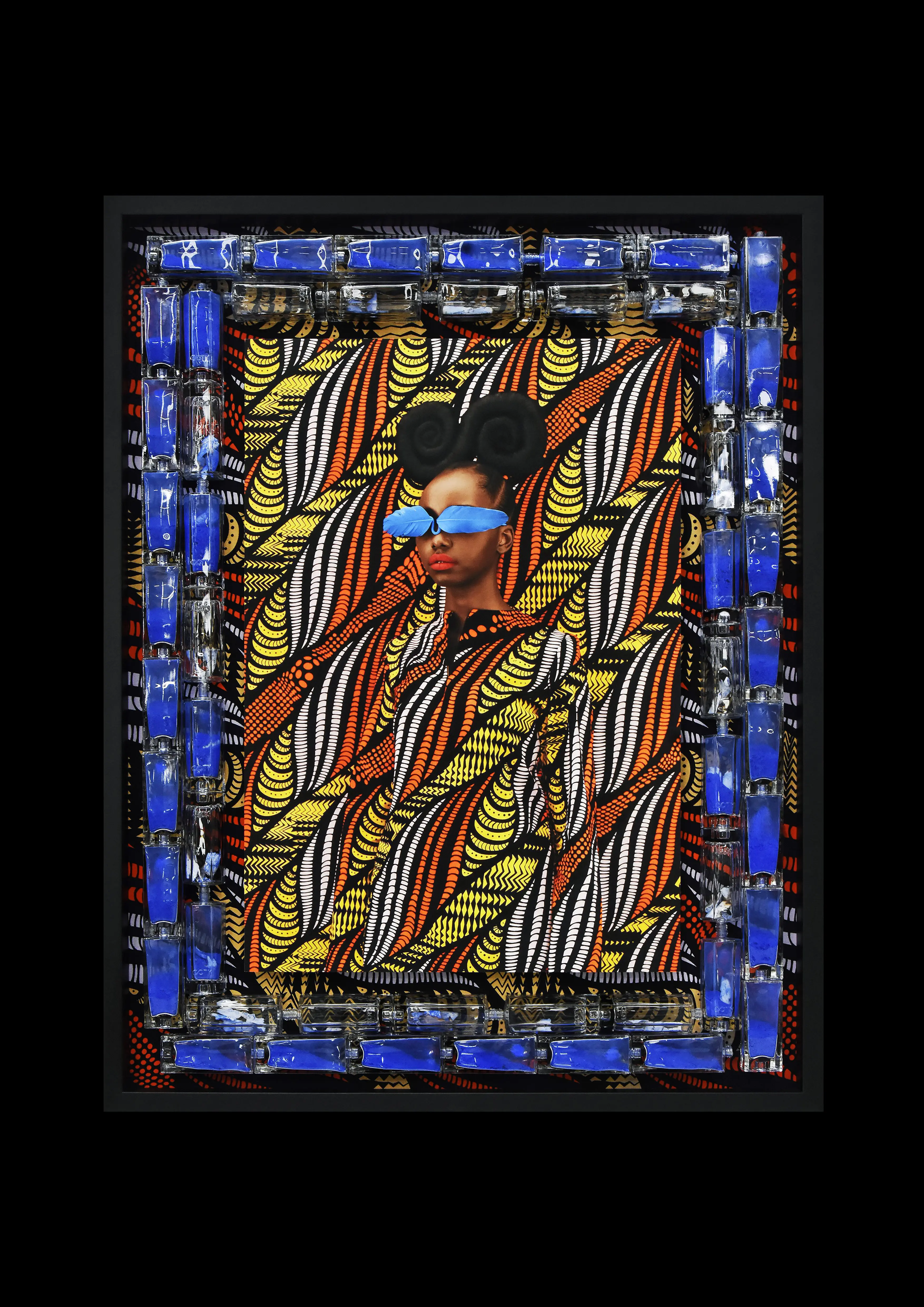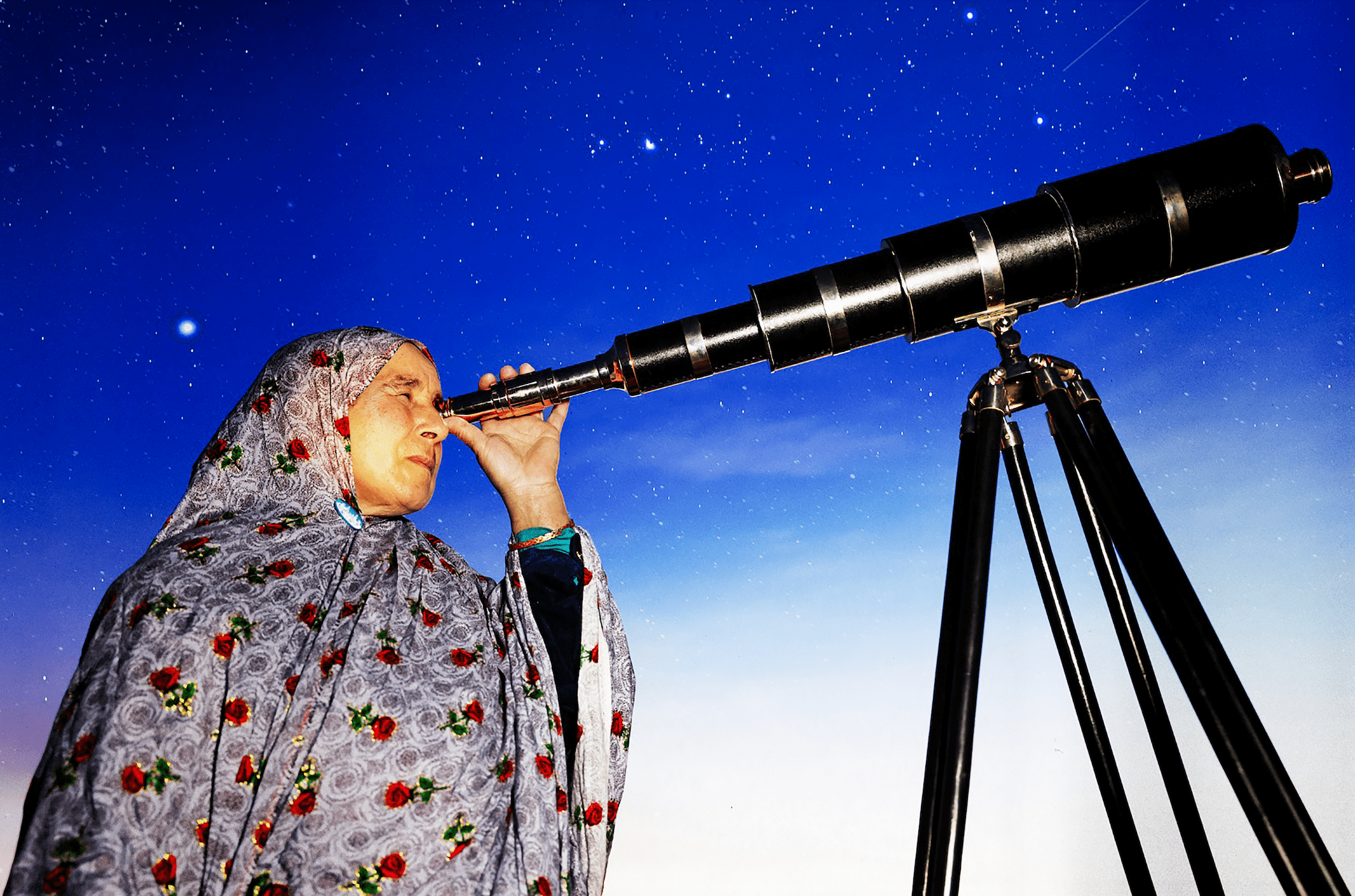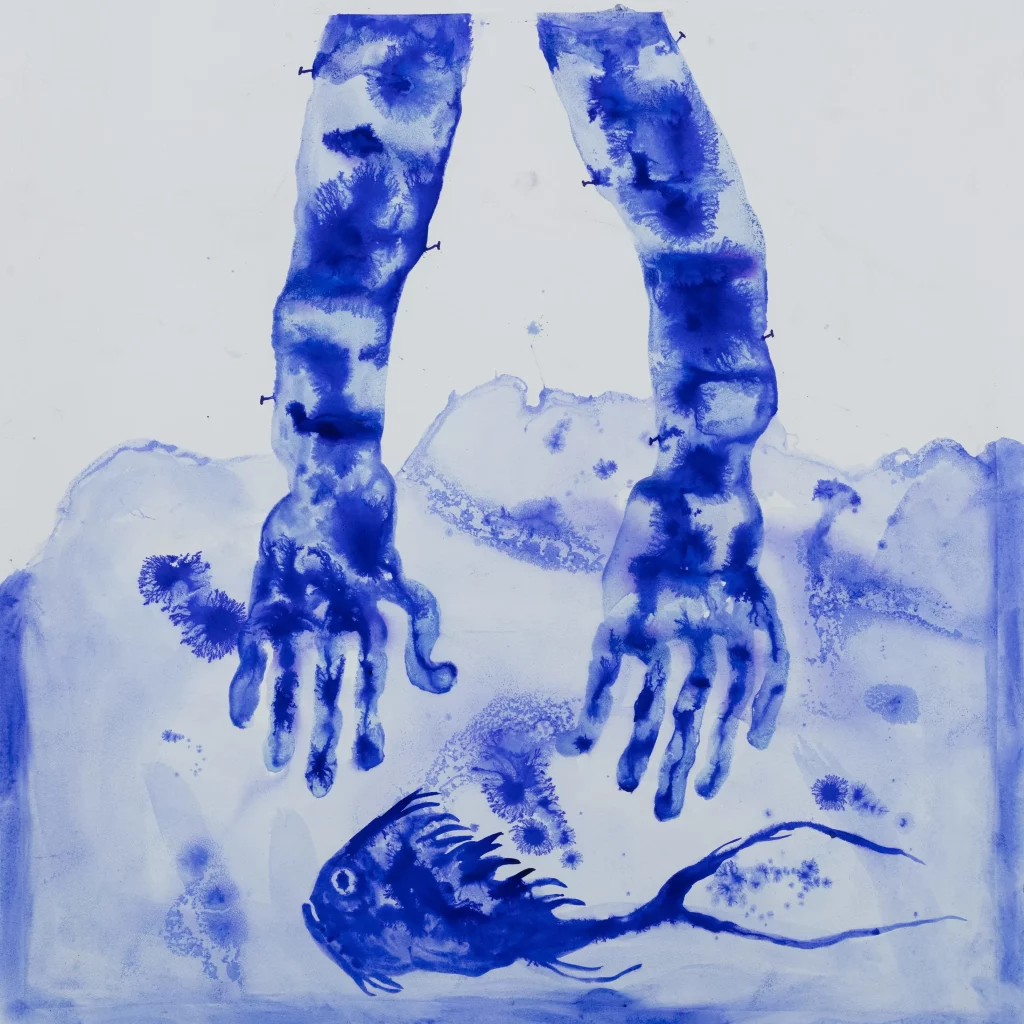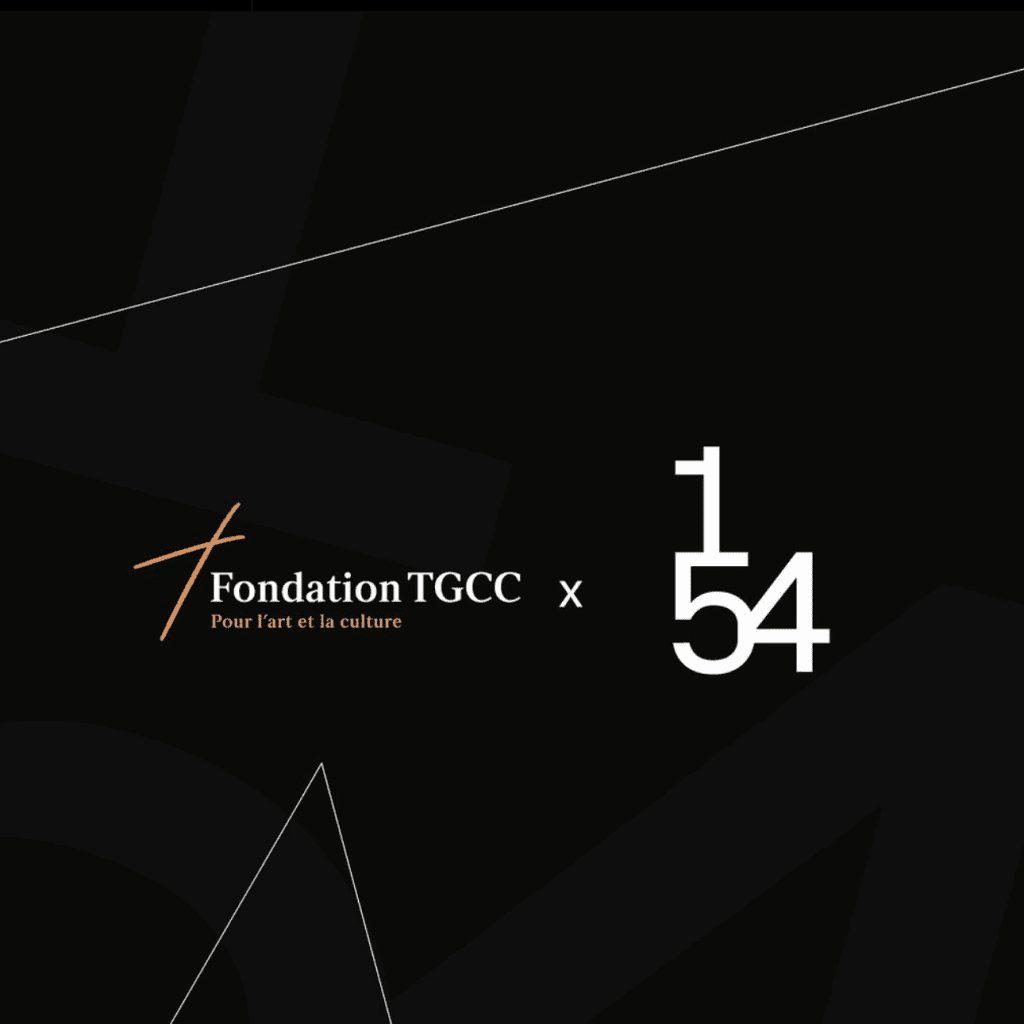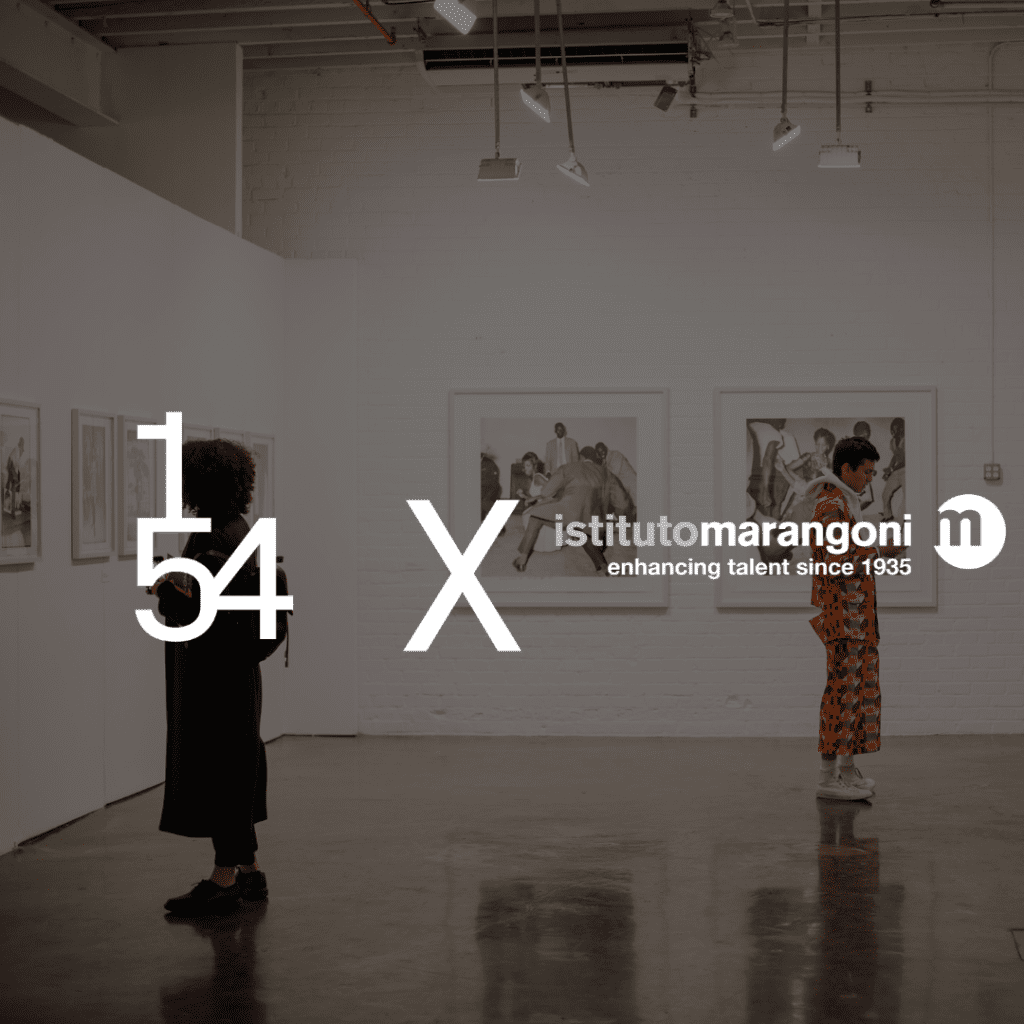Discover 1-54 Spotlight, a captivating new video & interview series content, delving into the extraordinary stories behind 1-54’s remarkable projects. This unique series not only showcases the creativity and innovation of unique project & personalities, offering a behind-the-scenes look at the passion and dedication driving each project forward.
As part of the inaugural 1-54 Spotlight series, delve into the first short documentary featuring Moroccan artist Amine El Gotaibi, realised by Karim Hapette. Explore the captivating narrative behind “Illuminate the Light”, 1-54 London’s courtyard installation presented by MCC Gallery, Marrakech based Gallery, shedding light on the artist’s profound connection to his roots and the intricate process of creating large-scale, impactful installations. Read also a unique written interview conducted by Olivia Peterson to explore Amine El Gotaibi’s world.
You speak of your grandmother’s kitchen as a core memory for realising your creativity; who, or what, were your creative influences when you were growing up and at the National Institute of Fine Arts, Tétouan?
My earliest memories of creativity are in my grandmother’s kitchen, where the wood fire was burning and would cover the walls with black ash over time. This ash was like a canvas, and I would use my fingers to reveal the white wall behind, playing and experimenting as a child. This was my first experience of expression. It was also my grandmother who gifted me the freedom to express and, therefore, imagination to become an artist. It was this freedom that also allowed me to embody and exist as an artist and attend the National Institute of Fine Arts in Tétouan. My biggest influences at the Institute, and even prior, were in the land art movement, such as Christo and Robert Smithson.
Producing large projects is important to you; when did you first realise how important scale was to your artistic practice? What was your first large-scale project?
Large scale has always been my focus. As a conceptual artist, being free to play with mediums opens up new dimensions in my practice and allows for a focus on impact and immersive experiences. My first opportunity to realise this type of scale was Ring of Submission between 2011-2014. Ring of Submission is brought to life through a refrigerated machine placed in a full-scale boxing ring. In it are frozen copies of my life-sized body, which are released at regular intervals. Rather than standing in an active position, this fighter is stuck to the ground, in a passive posture, in a state of submission. He has no visible opponent. He simply submits to the surrounding context. Within this project, there was a combination of skills, including a different specialist.
The other large-scale project was in 2016 called Territory National. This project explores the meaning of the phrase “etching one’s place in history” by combining performance, sculpture, photography, and video. To finalise this work, I travelled across the twelve regions of Morocco, according to the official breakdown, and I dug my name in gigantic letters in the earth for eight hours a day, scrupulously observing a wage earner’s daily working hours.
Some of my work is developed as projects. These projects can take many years and focus on key philosophies or themes that have inspired me. Both Ring of Submission and Territory National were projects like this, and so included many works within them.
You have previously created work with wool, earth, concrete, metal, and stone. These are all earthy, strong materials. How did you decide on the materials for Illuminate the Light? And can you elaborate on the process of how these large-scale pieces were made?
I always start my projects with research, and when the idea is clear and ready, then I begin to look at the raw materials I can use to best realise and translate them into a physical form. It is a process of exploration into natural and man-made materials, often finding combinations of both that strike a balance or tension. As this process is part of my work, it can also lead me to many types of materials.
Illuminate the Light followed this same process. We started with building a team of architects and engineers who could think about using light as a medium, exploring many materials and forms before landing on the structure that was realised. There was also the big challenge of making the work interactive and safe for the public and then, of course, transporting and building the work in very tight time frames. This took a hybrid team. Even the smallest parts of the structure had to be precise. These structures took mathematical precision to give the impression of simplicity and impact. The materials were chosen as they allowed me to materialise the experience of the work I was looking for – capturing the light and evoking the sense and atmosphere of Africa while also highlighting a contemporary viewpoint and challenging perception.
You briefly mention that the geometric sculptures are inspired by the seeds of a pomegranate, can you speak to the idea of the pomegranate seeds and why it became an important part of Illuminate the Light?
Firstly, Illuminate the Light represents Africa as a light. Africa has its own light sources, and yet this light is taken by the rest of the world, and in exchange, darkness is reflected back. The perception of the continent is that it is a small and helpless place, however, there is not just light but great strength and vast diversity. Each country has diverse landscapes, resources, people and even language. This diversity is central to the light of Africa, and the seeds of a pomegranate perfectly capture this diversity: They are each unique in shape and form but sit in mathematical balance with each other. The pomegranate is a mystery to us, as it only reveals its seeds when you break its skin and get under the surface to unlock its abundance. There were so many important metaphors for me in this form that it became central to the work.
Your work is very much focused on the perception of Africa and explores these ideas very succinctly and with a magnetic aura that draws in the viewer. When did you first start to produce works centred on the perception of the continent? Do you see this continuing as a major theme in your work?
In 2011 I discovered the Okavango Delta. It is a river unlike any other in the world as it completes its journey in the desert, not into the sea. This Delta spans three African countries and fuels life along its path. This discovery was transformative for me, and I became fascinated by this natural occurrence. My fascination was with the rules of nature and how, in this situation, the rules were adapted to allow a body of water to exist in the desert. This was the first time I had felt a draw to visit the Delta, and it connected me with a desire to explore my continent in a way I had never felt before. This then inspired a much deeper immersion and the project called Visite to Okavango, which is ongoing and involves more exploration into the untold histories and natural orders of the African continent. This project to date has included works such as Sun (W)hole (2019) at The Nirox Foundation in South Africa, Ba Moyi Ya Afrika (The Suns of Africa) (2019) at the Young Congo Biennale, and now Illuminate the Light for 1-54 London at Somerset House.
You’re now based in Marrakech, how does the city impact your artistic practice?
Marrakech, for me, was a place I instinctively felt both inspired in work and settled in life. The city has a rich history and has invited creativity since its foundation.
What is next? Can you tell us about any upcoming projects?
My next big project is in Qatar in February to launch their design biennale. There will be a series of projects coming up to be announced.




